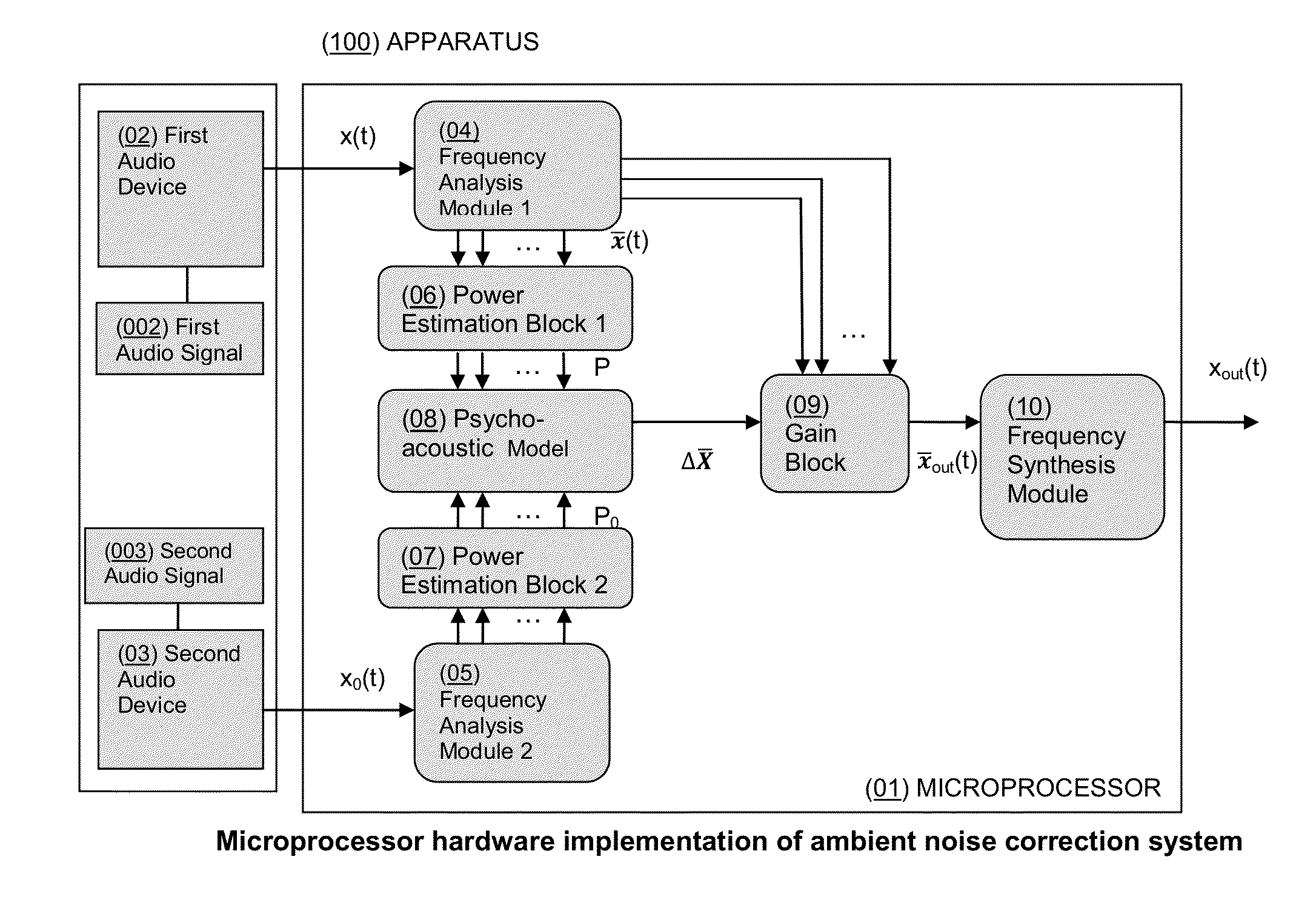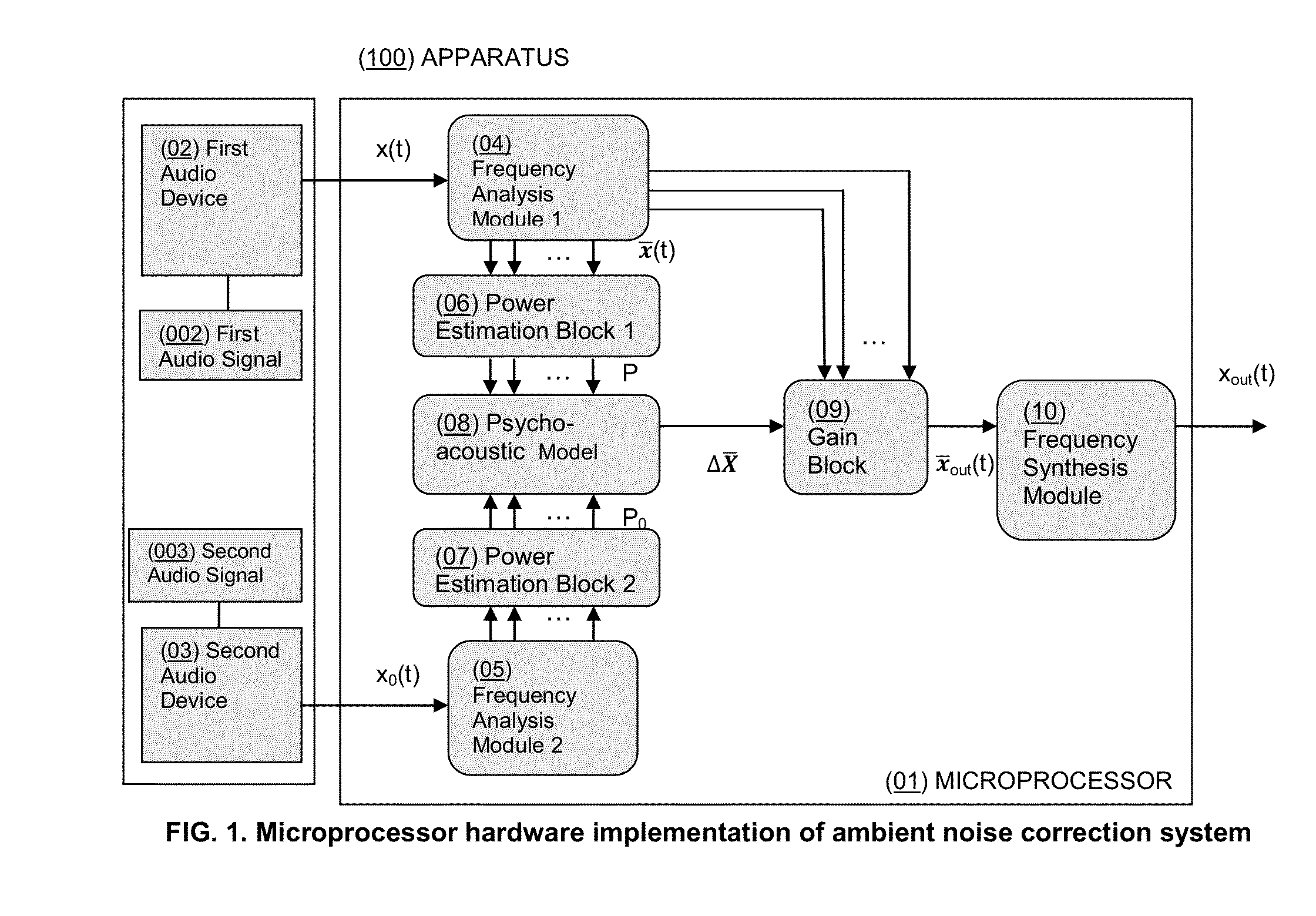System for Dynamic Spectral Correction of Audio Signals to Compensate for Ambient Noise
a dynamic spectral correction and ambient noise technology, applied in the field of audio processing, can solve problems such as reducing the awareness of listeners to potential dangers in the environment, systems that do not address the environment of the listener, and cannot be filtered
- Summary
- Abstract
- Description
- Claims
- Application Information
AI Technical Summary
Benefits of technology
Problems solved by technology
Method used
Image
Examples
Embodiment Construction
Apparatus
[0075]In some embodiments, the present invention comprises an apparatus 100, effective in producing corrections to a source audio signal across a spectrum of frequencies by applying corrective gains of amplitude to a plurality of channels which constitute a source audio signal, wherein corrective gains are generated for each channel through a psychoacoustic model, where the psychoacoustic model takes as inputs the source signal X and the noise signal X0, where the model computes the gain in sound intensity at a given frequency required to correct for the effect of an ambient noise signal, the apparatus 100 comprising:[0076](a) a first audio device 02, configured to extract a first audio signal 002 where the first audio signal 002 is a broadband audio signal of interest, the first audio device 02 operatively connected to a microprocessor 01;[0077](b) a second audio device 03, configured for extracting a second audio signal 003, where the second audio signal 003 is broadband ...
PUM
 Login to View More
Login to View More Abstract
Description
Claims
Application Information
 Login to View More
Login to View More - R&D
- Intellectual Property
- Life Sciences
- Materials
- Tech Scout
- Unparalleled Data Quality
- Higher Quality Content
- 60% Fewer Hallucinations
Browse by: Latest US Patents, China's latest patents, Technical Efficacy Thesaurus, Application Domain, Technology Topic, Popular Technical Reports.
© 2025 PatSnap. All rights reserved.Legal|Privacy policy|Modern Slavery Act Transparency Statement|Sitemap|About US| Contact US: help@patsnap.com



